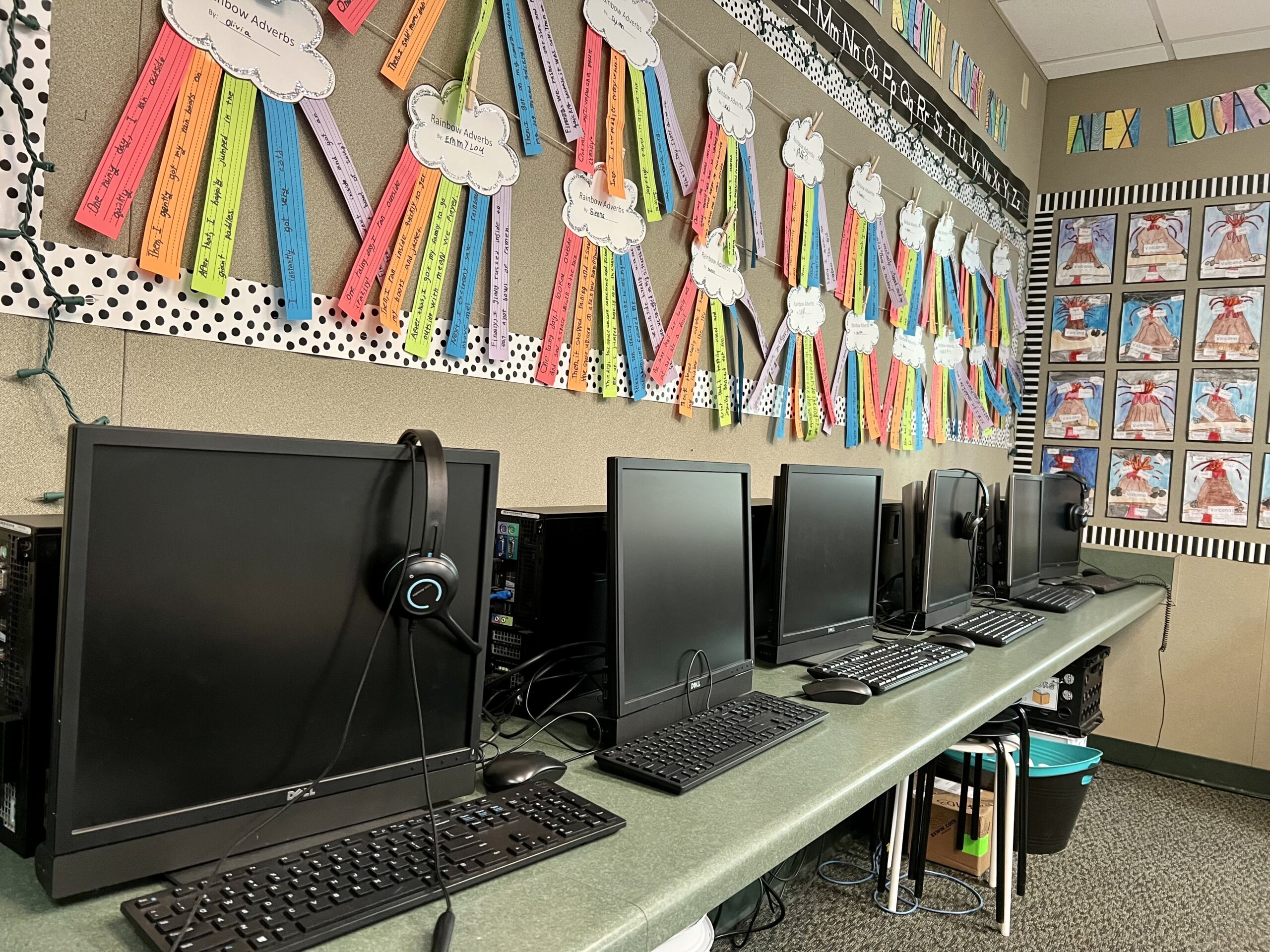The computer center in Mrs. Smylie’s second-grade class gives the opportunity for students to safely use internet resources. Photo by Sara Bhatt.
By Sara Bhatt, Staff Reporter
From restaurants to doctors’ offices to grocery stores, it’s almost guaranteed to find a kid with a device in their hand whether it be an iPad or their parent’s phone. The scene of a child having their eyes glued to a screen has become nothing out of the ordinary yet it’s something that parents and adults should start to reconsider for a multitude of reasons.
In educational environments where the use of technology is controlled, it can prove to be an impactful and useful tool, however, without supervision, this is not always the case especially when it comes to what happens outside of a classroom setting.
Jessica Smylie, a second-grade teacher and mother of two (ages 1 and 4), shared her perspective on the use of technology from both an educator’s and a mother’s point of view. “In my experience, the real harm of technology stems from unsupervised use at home,” Smylie said. Without adult supervision, kids can easily access online content that is inappropriate or encourages dangerous activity.
Smylie recalled an incident from earlier in the school year when one of her students was found to be the culprit of writing an expletive phrase on school property. When the student was asked why they wrote this phrase, they responded with, “I don’t know what it means, I heard it on YouTube.” This seems to be the case for many children who have unsupervised access to technology at home.
These children are exposed to inappropriate or hurtful content online due to lack of supervision and then proceed to repeat or reenact what they see online because they think it is okay. “A bulk of the social altercations that happen at school stem from technology use at home in some way,” Smylie said. Without supervision, technology can do much more damage than it can good.
Smylie went on to note that while elementary-age children can definitely benefit from using technology in classroom settings, “students need opportunities to build fine motor and gross skills, and technology shouldn’t take the place of these.” The same thing can be said about settings outside of the classroom. Young children are missing out on building valuable fine motor skills from hands-on toys as it becomes more and more common to put on a video for children just to keep them occupied.
Although the rise of technology has its downfalls in regard to the development of children, it can prove to be a useful tool when properly used and supervised. In classroom settings, the use of technology is typically through computers or tablets. Smylie acknowledges that setting strict and clear technology expectations with her students has allowed for in-class computer use to be a positive tool.
When children are supervised with technology use, doors are opened for growth and learning opportunities. However, allowing for unrestricted internet access is bound to create more issues and damage than intended.

